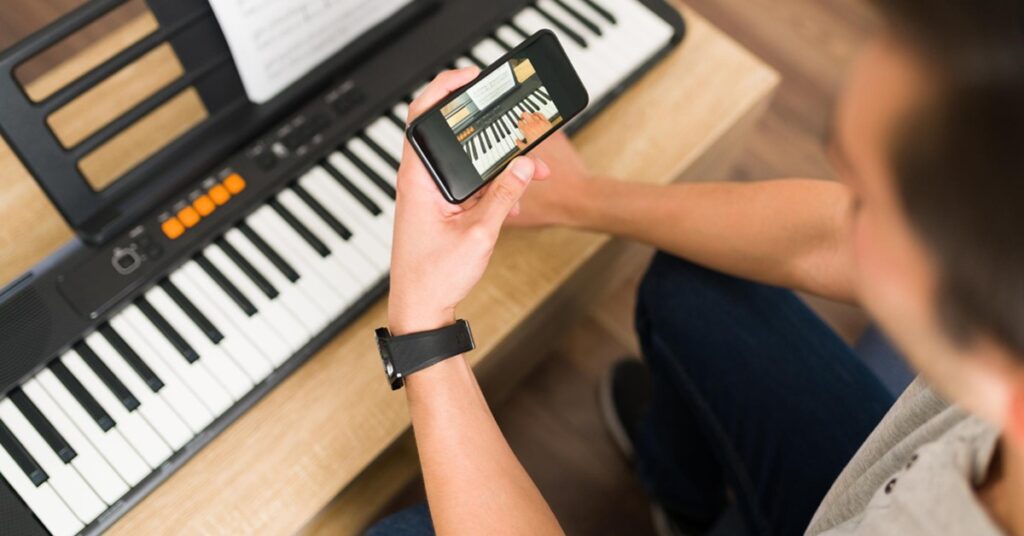Piano learning apps offer modern and interactive resources for those who want to start a musical learning journey. Nowadays, it is no longer necessary to invest in expensive physical materials or spend hours searching for scattered content on the internet to get started: all you need is a piano or keyboard (acoustic or digital) and a device with access to one of the many available apps.
These tools combine practicality, structured music theory and fun practices, enabling dynamic and motivating learning. Whether you’re interested in developing piano skills, expanding your repertoire or simply playing the songs you love, check out a list of five apps below that cater to different needs and styles, along with the main features each one offers.
1. The Musical Touch
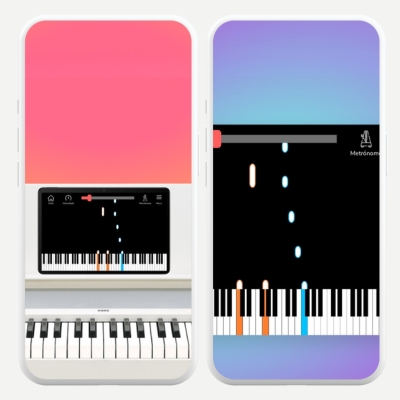
La Touche Musicale is one of the best options for those who want to start or improve their piano playing in an interactive, practical and economical way. Its catalog has more than 2,500 songs that cover different styles, such as pop, jazz, rock, rap, video game themes, movies and even anime, classified into different levels of difficulty: easy, medium, difficult and expert.
Another great feature is the possibility of connecting your own piano to the device, either through a MIDI-USB cable (ideal for digital pianos) or by activating the microphone on your cell phone/tablet so that the app recognizes the notes played on an acoustic instrument. The platform also provides additional functions, such as looping specific sections, metronome, speed adjustment, recommended fingering, and others. Available for Android and iOS.
2. Perfect Piano
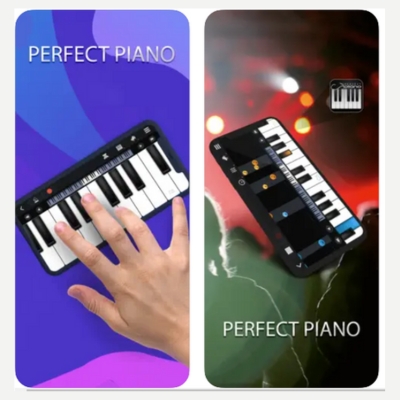
Perfect Piano is another interesting option for learning to play your favorite songs and improving your skills in a fun way. The app offers piano lessons, both free and paid, and features an interface that resembles a small virtual keyboard on the device's screen, allowing you to follow the lessons step by step.
The great thing about Perfect Piano is its “game” aspect, encouraging the student to repeat the notes correctly until they reach a satisfactory score. This increases engagement and encourages constant practice. On the other hand, it is worth noting that, to have a simulation of 88 keys on a smartphone, it would be necessary to use several devices connected at the same time (something that is somewhat unfeasible). Available for Android.
3. Pianist
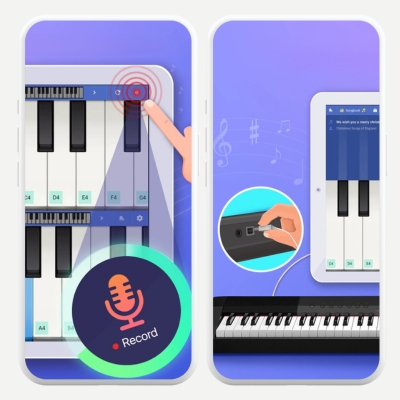
The main goal of this app is to help those who want to learn more about sheet music, learning how to read it and better understand its structure. The app uses a gamified approach to teach the music theory behind writing notes and symbols, making the process more relaxed.
In addition, Pianist offers some basic piano lessons to reinforce the understanding of theory, transforming sheet music reading into practice on the instrument. Although it is a tool focused on theoretical learning, there is room for fun, as the app proposes mini-challenges and fun activities that help to consolidate the content. Available for Android and iOS.
4. Chordify
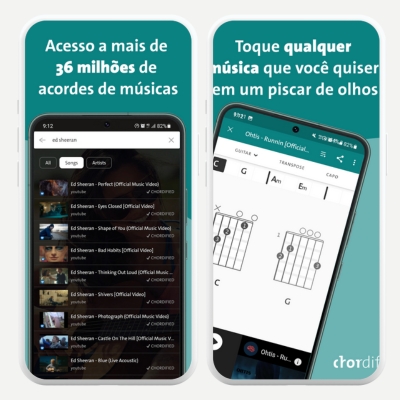
Chordify stands out for its transcription technology that identifies chords from any YouTube video and converts them into tablature for guitar, bass, or piano. So, if you’re interested in playing the harmonies of a specific song on the piano, simply select the video of the song you want and let the app do the work of extracting and displaying the chords.
However, Chordify doesn’t provide a complete piano learning experience, as it focuses only on showing basic chords. For beginners, it may lack more detailed guidance on playing technique, fingering, and sheet music reading. Still, it’s a valuable resource for those who want to refine their ear, recognize harmonic progressions, and practice vocal accompaniment. Available for Android and iOS.
5. Online Pianist
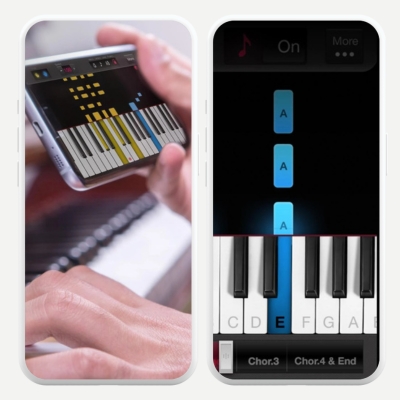
This application offers an extensive collection, covering everything from popular songs of the moment to soundtracks from films and series, which makes it easier to search for tracks from different musical genres.
For those who want to learn specific songs, the platform is usually quite inviting, as it displays the notes clearly and allows you to adjust the playback speed, helping both beginners and intermediate musicians. It is a good tool for those who prefer to memorize songs by viewing the notes on the screen, playing them at their own pace and exploring the available library. Available for Android and iOS.
Benefits of apps to learn how to play the piano
- Flexible and personalized learning: with several applications available, you can choose from a variety of teaching methodologies that suit your pace.
- Extensive catalog: Many platforms offer thousands of songs from different genres, such as pop, rock, classical music, jazz and soundtracks.
- Advanced features: the ability to connect your piano or keyboard to the app, receive real-time feedback and even adjust the speed at which notes are played makes practicing much more efficient.
- Saving time and money: Access to apps can be more economical than in-person classes, in addition to offering convenience. All you need is a cell phone, tablet or computer to study whenever you want.
- Dynamic learning: Many apps use game elements and challenges, making piano learning something stimulating.
How to choose apps to learn to play the piano?
When choosing an app, the first step is to identify your goals and level of knowledge. Some people just want to learn how to play specific songs without worrying too much about theory, while others want to master reading sheet music and understand the structure of songs in depth. By considering your preferences, it is easier to select the tool that best suits your profile.
Additionally, it’s important to check whether the app offers free or trial plans so you can test it out before committing to a premium version. Many apps have limited catalogs in the free version, but still offer valuable features, such as MIDI connections, real-time feedback, theory exercises, or even short piano lessons for beginners.
Finally, evaluate the usability and availability of the app on your devices. Check if it is available for Android, iOS, or as a web version, and confirm that the interface is intuitive. It is also important to consider reviews from other users and the support offered by the developers, as this greatly influences your long-term learning experience.
Frequently Asked Questions About Piano Learning Apps
1. Is it possible to learn piano using just apps, without face-to-face lessons?
Yes, it is possible to develop significant piano skills using only apps and online content, especially when they offer real-time feedback and structured teaching methods. However, taking at least a few in-person lessons or consulting a teacher to correct posture, detail hand techniques and address musical nuances can speed up the process and prevent performance flaws.
2. Are piano apps suitable for all learning levels?
In general, most apps focus on beginners and intermediates, but there are platforms aimed at advanced students who want to improve specific techniques.
3. Can I learn music theory using these apps?
Many apps cover music theory, whether through sheet music reading lessons, interval recognition exercises, or even introductory content on scales and chords. If your focus is on more in-depth music theory, however, you can supplement your study with specific books, courses, or websites to ensure a solid foundation.
4. Why is MIDI connection considered so important in some applications?
The MIDI (Musical Instrument Digital Interface) connection allows the app to “talk” directly to your digital piano or keyboard. This way, each note played is recognized and evaluated in real time by the platform, generating immediate feedback on accuracy and rhythm. This feature makes practice more objective, as the user knows exactly what they are doing right or wrong, without having to rely solely on their own ears.
5. How important is it to have access to a wide catalog of music?
A varied catalog of songs helps maintain enthusiasm and allows students to practice different genres, exploring new rhythms, scales and technical challenges. The more motivated a person feels by the music they play, the more consistent their study routine tends to be.
Perfect your talent with apps to learn how to play the piano
Mastering the piano is a project that can transform the way you enjoy music and express your emotions. With the help of the right apps, the entire process becomes simpler, more accessible, and more engaging, allowing for gradual and rewarding progress.
Read also: Apps to clean your cell phone
Regardless of your level or goal, explore the tools presented, test the features and discover the ideal format for your learning style. Music, after all, is a universal language capable of bringing people together and revealing hidden talents — just take the first step and let each note be an invitation to a journey of self-discovery and passion.

